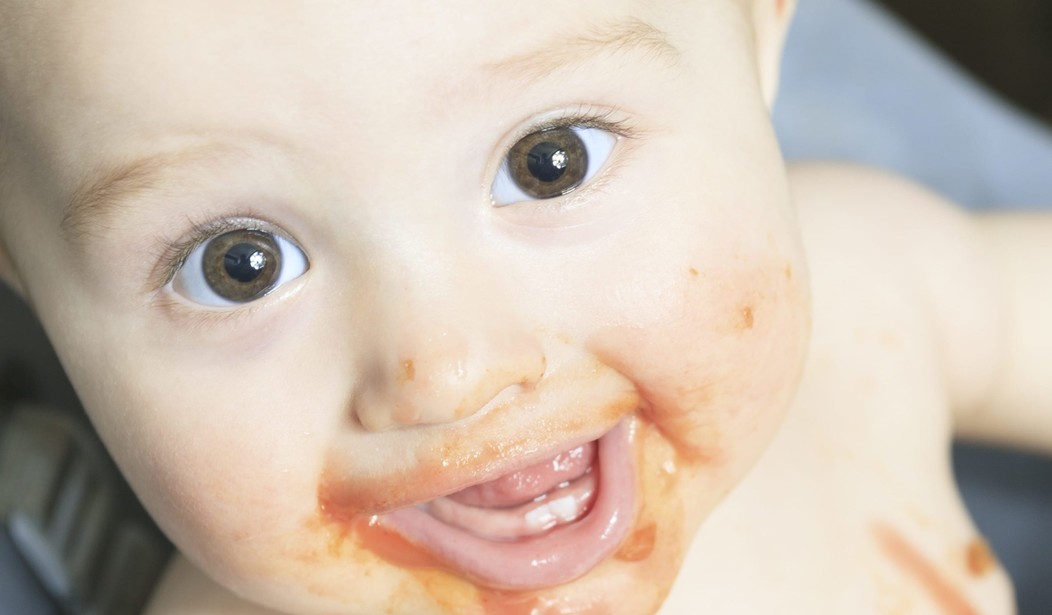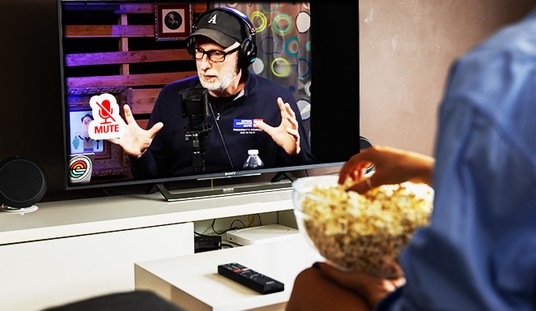Last week, I discussed how the habit of helicopter parenting can begin when transitioning children to solid foods. While it is great to spot a pitfall, how does one avoid it?
When teaching children to eat solid food, the root problem is a lack of variety. Try some baby foods and see if you notice a discernible difference in the texture of commercial baby food across food types or across the “Stages.” You don’t get any chunks until finger foods.
Flavor is lacking as well. Gerber, et al. use salt to season their foods, with the occasional cinnamon in dessert dishes. Otherwise, forget about spices. I found more flavors in baby food in the UK (I weaned two infants in the U.S. and two in the UK) and that is a pathetic endorsement. The colors and the smells are different, but little else.
To train healthy eaters, start early and progress steadily.
4-6 Months
Try cereal. Make it runny with lots of milk or formula. Put it on her tongue. If she thrusts it out by thrusting her tongue against the roof of her mouth (which is how nursing works, incidentally), then give it up and try again tomorrow. Over time the baby will figure out how to get it to the back of her mouth and swallow. She might suck on her fist — or toes —to help. (If nightly baths weren’t a routine previously, they will be once starting solids. It is a messy business.)
No need to rush this phase. Swallowing takes time and rushing might constipate the wee one anyway. When she learns to swallow properly, slowly thicken the mush.
You can use other foods, too. Back in my baby days, the advice was to avoid all allergy risk foods as long as possible, which led moms to avoid variety out of an abundance of caution. Now it seems that advice might have driven the statistical increase in allergies. Add on that most of the first foods (think apples and carrots) are low allergy foods anyway, and the old advice to introduce a new food once every three days looks like stress for the sake of. Introduce foods you can mush finely. It doesn’t need to be more complicated than that. The bulk of the five-month-old’s diet is still milk.
Next: 6-9 and 9-12 Months
6-9 Months
If you are not already, start mushing food yourself. Commercial baby food is expensive and bland and many foods can be mashed with a fork, much less a stick blender, which I highly recommend.
Having pot roast? Puree it. Sure your stew has thyme, pepper, red wine, and beef stock in it — so? Make things finer in the beginning, slowly introducing your little one to the varied textures and tastes of food.
Around 9-12 Months
When the little one starts to use her thumb and forefinger to pick things up and demonstrates decent swallowing skills, start putting mushy bits of food on her tray while you spoon her real meal into her mouth. Anything you can easily mush with your tongue against the roof of your mouth is gum-able.
Now, this is the bit I find modern moms have a hard time following: if the little one seems more interested in the bits on the tray than what’s on the spoon, then go unload the dishwasher or open the mail. Yes, it might take triple the time to eat everything and half might end up on the floor. Go with it. (If your dog does not already love the baby, they will become fast friends now.)
Comfort yourself that you have control over what goes on the tray. When it comes to food, that is the only control you have, and it doesn’t last as long as you expect unless you never intend on letting your child out of your direct care, which is not a consequence-free solution for you or the child. This is as much an exercise in giving the child a little independence as it is teaching the child a little independence.
At 12 months the little one should mostly feed herself and be off baby food. The only difference between your food and hers should be how much you chop it up.
https://www.pinterest.com/pin/502503270893097925/
Next: A few ProTips
A Few #ProTips
Kids eat in streaks. Sometimes it is a specific food, like avocados. Sometimes it’s a group, like carbs or protein. If your wee one is thriving then blow off the streaks. The food pyramid happens, just rarely over the course of a single day.
Don’t be a short order cook. What you are serving is what is for dinner. I had a simple “try everything” rule. If you have served chicken, green beans, and mashed potatoes, insist the child swallow a bite of everything. If all she wants afterwards is the mash, go with it without comment. Maybe she’s on a carb kick.
Actually, when I ignored — and I mean really ignored, as in offered no comment or even eye contact — the protests of “I don’t want chicken,” the objector would usually eat the chicken. If they are hungry, they will eat unless you make refusal a point of pride to them. Then, depending on your child’s own personality, that refusal might become an all out battle of wills. The child will win.
Timing is in the teeth. The road from mush to beef jerky is long and leisurely. The more grinding molar action required, the longer it takes before a child will eat it. Teething is specific to each child, which is one of the reasons direct comparisons kid to kid don’t work well.
Use your judgment. You’ll figure it out.
Read more from Leslie:
Everything You Need to Know About Your First Two Weeks With a Newborn
The Essentials You Need to Know About Weeks 2 to 8 With an Infant
How to Schedule a 4- to 6-Month-Old Baby









Join the conversation as a VIP Member